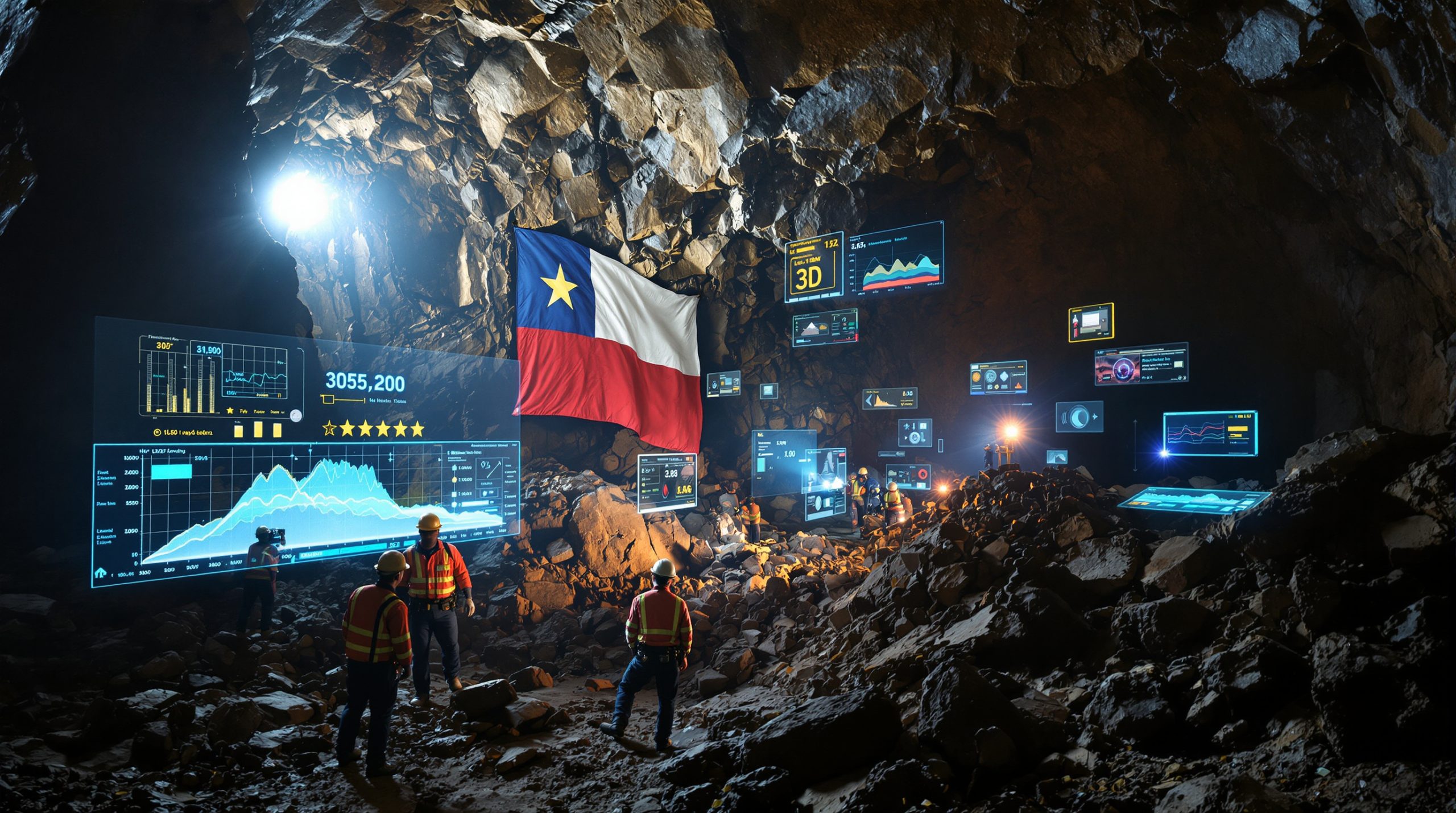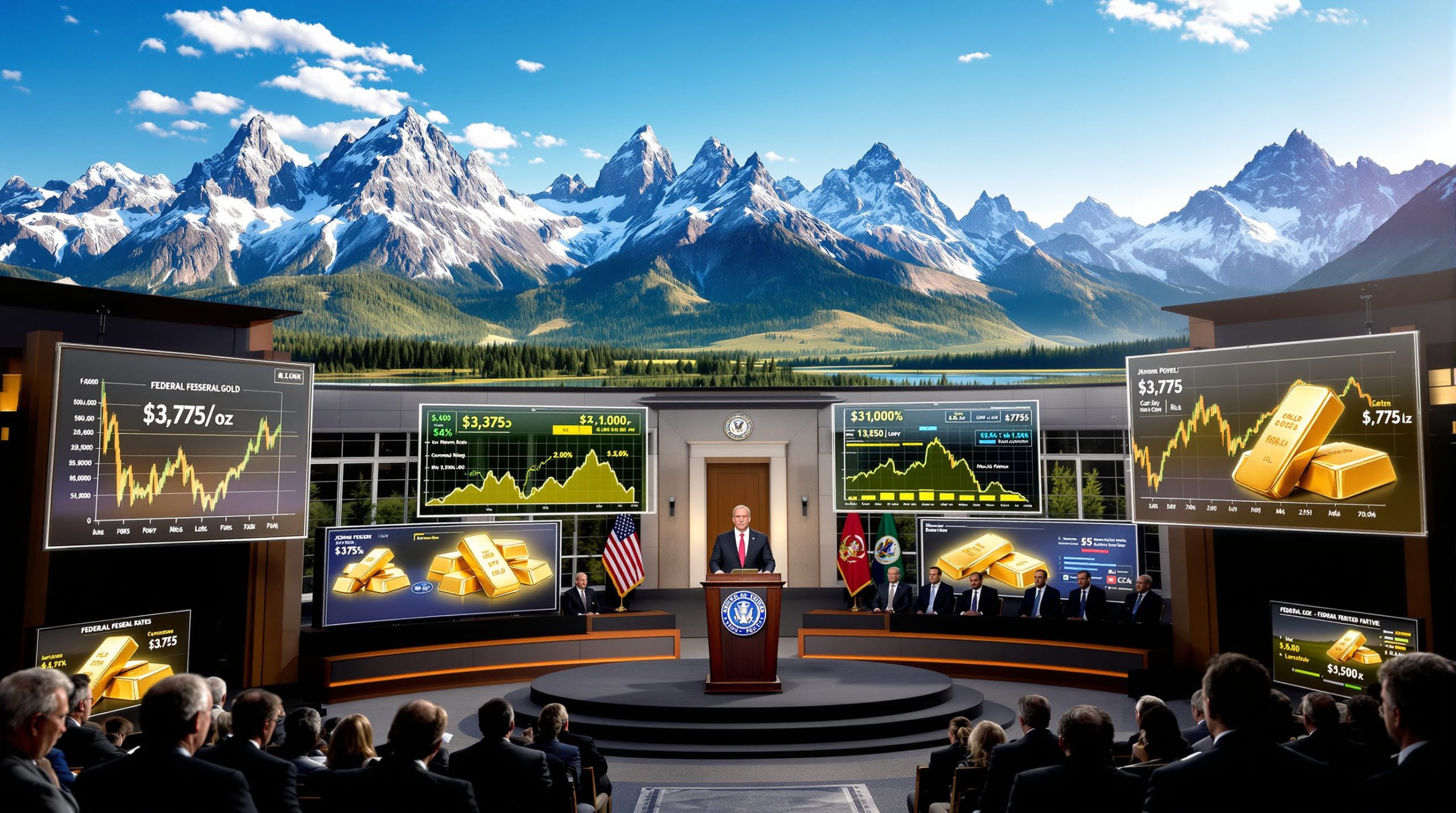Nevada's Strategic Minerals Reserve: Securing America's Critical Resource Future
In an era of increasing geopolitical tensions and supply chain vulnerabilities, the establishment of the Strategic Minerals Reserve (SMR) in Nevada represents a pivotal shift in U.S. resource security strategy. This groundbreaking initiative aims to create a robust buffer against market volatility and potential supply disruptions for minerals that are essential to America's defense technologies, clean energy transition, and industrial competitiveness.
The development comes at a critical time, following recommendations from a comprehensive Hoover Institution report that advocated for a U.S.-led critical minerals energy security stockpile to counter international market manipulation and strengthen domestic supply chains.
Why Is Nevada Establishing a Strategic Minerals Reserve?
The creation of Nevada's Strategic Minerals Reserve addresses urgent national security concerns regarding America's dependency on foreign sources for critical minerals. According to recent government assessments, the U.S. is currently over 50% import-dependent for 31 of the 50 minerals designated as critical to economic and national security.
This vulnerability has been highlighted by recent supply chain disruptions and growing concerns about market manipulation by non-allied nations. As Tom Burns, Nevada GOED executive director, explained, "international manipulation of the markets for lithium and other critical minerals presents a real threat" to both national security and global competitiveness.
The SMR initiative represents a proactive approach to mitigate these risks by:
- Creating strategic stockpiles of essential minerals
- Developing domestic processing capabilities
- Ensuring material availability for defense and clean energy applications
- Reducing vulnerability to foreign supply disruptions
- Stabilizing prices for critical mineral markets
Beyond addressing immediate vulnerabilities, the SMR aims to position the United States for long-term leadership in critical technology sectors that depend on these minerals, from semiconductor manufacturing to advanced battery production.
What Is the Strategic Minerals Reserve and Its Location?
The Strategic Minerals Reserve will be established at the Hawthorne Army Depot in Mineral County, Nevada—a location chosen for its strategic advantages and existing infrastructure. This federally controlled site offers several key benefits:
- Existing security infrastructure and protocols
- Excellent connectivity to rail and intermodal transportation networks
- Proximity to Nevada's rich mineral resources
- Available facilities that can be repurposed for storage and processing
- Remote location that provides natural security benefits
The facility will focus on the comprehensive management of critical minerals through several integrated functions:
Key Components of the Nevada SMR:
- Secure Storage Facilities: Climate-controlled environments designed for preserving mineral integrity over extended periods
- Refining and Processing Capabilities: On-site facilities to bridge the domestic processing gap that currently forces many raw minerals to be processed overseas
- Distribution Infrastructure: Advanced logistics systems connecting to national transportation networks
- Material Testing Laboratories: Facilities to ensure quality control and material specifications
- AI-Powered Inventory Management: Systems to optimize stockpile levels and predict future needs
The SMR is designed to be more than a passive storage facility—it represents an active hub for critical mineral security that incorporates processing, analysis, and distribution capabilities within a secure federal installation.
Who Are the Key Players Behind the Strategic Minerals Reserve?
The development of Nevada's Strategic Minerals Reserve represents a sophisticated collaboration between public and private entities, combining government oversight with private sector expertise.
Primary Stakeholders:
| Organization | Role |
|---|---|
| Volato Group | Leading development partner |
| M2i Global | Operations and management partner |
| Nevada GOED | State-level support and coordination |
| Department of Defense | Federal oversight and security protocols |
| Defense Logistics Agency | Logistics expertise and planning |
| Department of Energy | Technical guidance on energy applications |
This public-private partnership model has been specifically designed to leverage the agility and innovation of the private sector while maintaining alignment with broader national security order objectives.
Major General (Ret.) Alberto Rosende, CEO of M2i Global, describes the SMR as "a new kind of readiness, one that blends innovation, industry, and infrastructure" focused on creating "a durable advantage for the U.S. across economic and defense priorities."
The initiative has also attracted international partnerships, with Nimy Resources entering into a collaboration agreement with M2i Global in February 2025 to secure gallium supply for U.S. Department of Defense technological applications.
How Will the Strategic Minerals Reserve Function?
The Strategic Minerals Reserve will operate with a comprehensive approach that spans the entire mineral value chain, from ethical sourcing to advanced distribution systems.
Operational Framework:
- Procurement Strategy: Materials will be sourced primarily from U.S. mines and processing facilities, with supplementary supplies from allied nations
- Secure Transportation: Specialized logistics systems to move materials safely to the Hawthorne facility
- Quality Verification: Advanced testing to ensure materials meet required specifications
- Climate-Controlled Storage: Custom environments to maintain material integrity
- Processing Capabilities: On-site refining to transform raw materials into more usable forms
- AI-Powered Inventory Management: Predictive analytics to optimize stockpile levels
- Strategic Distribution: Coordinated release of materials during supply disruptions
The facility will incorporate blockchain-based traceability systems to ensure the ethical sourcing of all materials, with a focus on procurement from U.S.-allied nations and certified partners. This commitment to transparency extends throughout the supply chain, from mine to final distribution.
Additionally, the SMR will employ advanced AI mining efficiency forecasting tools designed to predict future material requirements based on technological trends, defense programs, and clean energy deployments, enabling more strategic inventory management.
What Critical Minerals Will Be Prioritized?
The Strategic Minerals Reserve will focus on a carefully selected portfolio of minerals deemed essential for national security, clean energy transition, and technological leadership.
Priority Materials:
| Material | Strategic Importance | Primary Applications |
|---|---|---|
| Gallium | Critical | Semiconductor manufacturing, defense electronics, 5G infrastructure |
| Graphite | High | Battery technologies, energy storage, thermal management |
| Copper | Moderate | Electrical infrastructure, renewable energy, EVs |
| Rare Earth Elements | Critical | Permanent magnets, defense systems, precision guidance |
| Lithium | High | Battery storage, grid-scale systems, electric vehicles |
| Cobalt | High | Battery cathodes, superalloys, aerospace applications |
The SMR's initial focus on gallium reflects its growing importance in semiconductor manufacturing and defense electronics. Through a partnership established in February 2025, Nimy Resources will supply gallium specifically for Department of Defense technological applications, highlighting the mineral's critical role in national security.
Beyond these initial priorities, the reserve will expand to include additional minerals based on supply risk assessments, technological importance, and market vulnerability metrics developed in coordination with federal agencies.
What Are the Economic Benefits for Nevada?
The establishment of the Strategic Minerals Reserve is projected to deliver substantial economic benefits to Nevada, particularly in the Hawthorne region which has historically faced economic challenges.
Economic Impacts:
- Job Creation: Estimates suggest the facility will create 150-200 direct jobs in its initial phase, with potential for expansion
- Workforce Development: Partnerships with Nevada's universities and technical institutes will develop specialized training programs
- Supply Chain Clustering: The SMR is expected to attract related businesses to the region
- Federal Investment: Initial funding estimates range from $250-300 million for facility development
- Technology Transfer: Advanced processing technologies may create spillover benefits for Nevada's existing mining sector
The initiative aligns with Nevada's economic diversification goals by leveraging the state's mineral wealth and existing mining expertise while creating high-skill jobs in processing and advanced logistics.
Tom Burns of Nevada GOED emphasized that "Nevada's abundance in critical minerals presents an opportunity to drive innovation and economic opportunities across our state and beyond," highlighting the potential multiplier effects of the project.
The economic impact extends beyond direct employment, with the potential to strengthen Nevada's position as a critical node in the national mineral security infrastructure, attracting related industries and research facilities to the region.
How Does the SMR Address National Security Concerns?
The Strategic Minerals Reserve represents a comprehensive response to growing concerns about mineral supply vulnerabilities and their implications for national security and defense readiness.
Security Dimensions:
- Reducing Foreign Dependence: The U.S. currently relies on China for processing over 80% of rare earth elements and depends on potentially unreliable foreign sources for many other critical minerals
- Ensuring Defense Material Availability: Many advanced weapons systems and communications technologies require specific minerals that face supply constraints
- Countering Market Manipulation: The SMR provides a buffer against attempts to use mineral supplies as economic leverage
- Supporting Technological Sovereignty: Ensuring materials are available for emerging defense technologies
- Strengthening Allied Partnerships: Coordination with friendly nations on mineral security
By establishing domestic stockpiles and processing capabilities, the SMR aims to mitigate the risk that critical defense programs could be compromised by supply disruptions or price volatility. This approach recognizes minerals as strategic assets that require the same level of security planning as other defense resources.
The integration of advanced AI forecasting tools will allow the SMR to anticipate future material needs based on defense technology roadmaps, ensuring that stockpiles evolve to meet changing requirements rather than remaining static collections.
What Technological Innovations Will the SMR Implement?
The Strategic Minerals Reserve will incorporate numerous cutting-edge technologies to optimize operations, ensure security, and maximize efficiency.
Technological Features:
- AI-Powered Inventory Management: Advanced algorithms will predict demand patterns and optimize stockpile levels
- Blockchain-Based Traceability: Digital systems will track materials from source to application
- Automated Material Handling: Robotic systems will manage physical material movement with minimal human intervention
- Advanced Spectrographic Analysis: High-precision testing will verify material composition and quality
- Digital Twin Modeling: Virtual facility replicas will optimize operations through real-time simulation
- Quantum Sensors: Next-generation detection systems will monitor environmental conditions
- Cybersecure Control Systems: Hardened networks will protect operational technology
These technological innovations represent a significant advance beyond traditional stockpile approaches, creating what security experts describe as a "smart reserve" capable of dynamic adaptation to changing conditions.
The integration of these technologies also positions the SMR as a testing ground for innovations that could later be deployed throughout the mineral supply chain, potentially improving efficiency and security across the sector.
How Does the SMR Align with Clean Energy Transition Goals?
Beyond its national security implications, the Strategic Minerals Reserve will play a crucial role in supporting America's clean energy ambitions by ensuring stable supplies of materials essential for renewable technologies.
Clean Energy Connections:
- Battery Material Security: Lithium, cobalt, nickel, and graphite are essential for energy storage technologies
- Solar Manufacturing Support: Gallium, indium, and tellurium are critical for advanced solar panels
- Wind Turbine Components: Rare earth elements are necessary for permanent magnet generators
- Grid Infrastructure: Copper and aluminum are fundamental to transmission expansion
- Hydrogen Technologies: Platinum group metals are essential for fuel cells and electrolyzers
The clean energy transition is projected to increase mineral demand by 400-600% for key materials by 2040, according to International Energy Agency forecasts. The SMR will help ensure these increased demands don't create supply bottlenecks that could slow deployment of renewable technologies.
By incorporating material recycling and recovery operations, the SMR will also support circular economy principles that reduce the environmental footprint of mineral extraction while increasing supply resilience.
What Challenges Must the SMR Overcome?
Despite its strategic importance, the Nevada Strategic Minerals Reserve initiative faces several significant challenges that must be addressed for long-term success.
Key Challenges:
- Funding Sustainability: Securing consistent appropriations across changing political landscapes
- Processing Technology Gaps: Developing domestic expertise in mineral processing after decades of offshoring
- Market Integration: Balancing strategic reserves with commercial market dynamics
- Environmental Considerations: Ensuring responsible processing practices that meet Nevada's standards
- International Relations: Managing potential diplomatic tensions with current mineral suppliers
- Operational Complexity: Coordinating multiple stakeholders with different priorities
The processing technology challenge is particularly significant, as the U.S. has lost considerable expertise in refining and processing many critical minerals. Rebuilding this knowledge base will require substantial investment in research, development, and workforce training.
Environmental considerations also present important challenges, as processing operations must meet stringent standards while remaining economically viable. The SMR will need to incorporate state-of-the-art environmental controls and monitoring systems to ensure compliance with all applicable regulations.
What Is the Long-Term Vision for the Strategic Minerals Reserve?
The Nevada facility represents the first step in a broader strategy to secure America's mineral future, with potential for significant expansion and evolution over time.
Future Directions:
- Network Expansion: Potential development of additional regional facilities focused on specific mineral groups
- Processing Advancement: Research and development of next-generation refining technologies
- International Coordination: Alignment with allied nations' strategic reserves and sharing of best practices
- Private Sector Integration: Increased partnerships with domestic mining operations
- Urban Mining Focus: Development of advanced recycling capabilities to recover minerals from waste streams
- Mineral Substitution Research: Support for finding alternatives to the most supply-constrained materials
The long-term vision extends beyond passive stockpiling to creating an active mineral security ecosystem that combines strategic reserves, domestic production, advanced processing, and material innovation.
This comprehensive approach recognizes that true mineral security requires a multifaceted strategy that addresses vulnerabilities throughout the supply chain while maintaining economic competitiveness and environmental responsibility. Furthermore, as mining innovation trends continue to evolve, the strategic minerals reserve will need to adapt to new extraction and processing technologies.
FAQ: Nevada's Strategic Minerals Reserve
What makes Nevada an ideal location for the Strategic Minerals Reserve?
Nevada offers a unique combination of existing federal infrastructure at the Hawthorne Army Depot, strong transportation connections, proximity to active mining operations, and supportive state policies for resource development. The state's long history in mining provides access to technical expertise and potential supply relationships that would be difficult to replicate elsewhere.
How will the Strategic Minerals Reserve differ from the National Defense Stockpile?
The Strategic Minerals Reserve takes a more comprehensive approach than the traditional National Defense Stockpile, incorporating processing capabilities, advanced inventory management, and broader economic security considerations. While the National Defense Stockpile focuses primarily on raw materials for military applications, the SMR addresses the entire value chain and supports both defense and civilian technology needs.
What role will private industry play in the Strategic Minerals Reserve?
Private sector partners like Volato Group and M2i Global will provide operational expertise, technological innovation, and management capabilities under federal oversight. Mining companies will serve as potential suppliers, while technology firms will contribute advanced systems for inventory management and security. This public-private model aims to combine government strategic direction with private sector efficiency and innovation.
How will the Strategic Minerals Reserve impact global mineral markets?
The SMR aims to stabilize rather than disrupt markets by creating strategic buffers against volatility while supporting responsible production. By focusing on ethical sourcing from allied nations, the initiative supports market development in friendly countries while reducing vulnerability to market manipulation by non-allied suppliers. The reserve's inventory management systems will carefully calibrate acquisitions and releases to minimize trade war market impacts.
What environmental safeguards will be implemented at the Strategic Minerals Reserve?
The facility will incorporate state-of-the-art environmental controls including closed-loop water systems, advanced air filtration, energy efficiency measures, and comprehensive monitoring programs. By centralizing processing in a controlled environment with the latest technologies, the SMR can implement higher environmental standards than might be possible across dispersed operations. All activities will comply with federal and Nevada environmental regulations, with regular public reporting on environmental performance.
Want to Capitalise on the Next Major Mineral Discovery?
Stay ahead of market movements with Discovery Alert's proprietary Discovery IQ model, which delivers real-time notifications on significant ASX mineral discoveries—turning complex data into actionable investment insights. Explore our dedicated discoveries page to understand how historic mineral discoveries have generated substantial returns for early investors.




